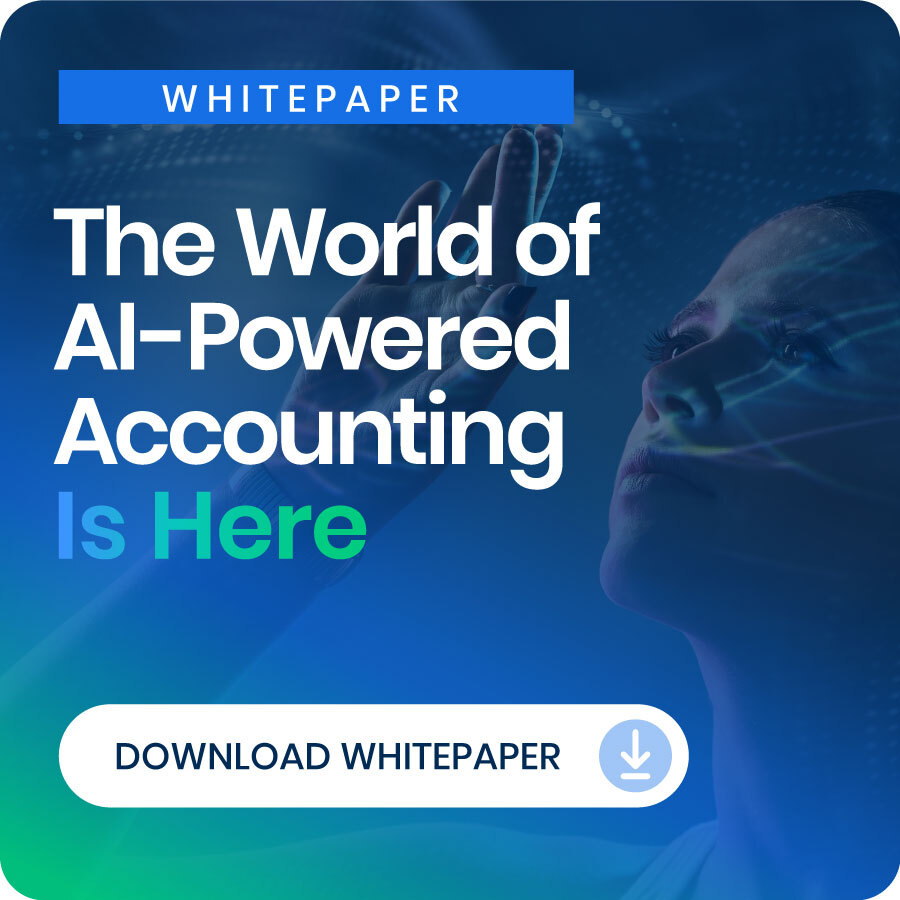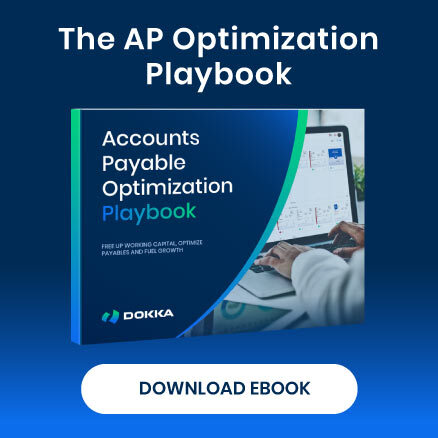Financial controllers face constant pressure to balance accuracy, compliance, and speed.
Managing invoices, receipts, reconciliations, and audit files lies at the core of financial control. Every transaction must be defensible, and every document traceable.
Yet, many controllers still contend with fragmented systems, decentralized filing, and manual reconciliation.
Invoices arrive through multiple channels. Receipts pile up in email threads. Supporting documentation gets misplaced or saved in the wrong folder. Month-end close becomes a search for files that “must be somewhere,” while audit season turns into a scramble to prove everything is complete and traceable.
Transforming chaos and redundancy into clarity and control remains one of the most pressing challenges for financial controllers.
To overcome it, they are increasingly adopting automation platforms that unify scattered workflows and bring all those moving parts together within a single, centralized, intelligent ecosystem.
The Financial Controller’s Daily Reality
Controllers typically juggle dozens of document sources: vendor invoices arriving via email, scanned receipts from field teams, bank statements in multiple PDF formats, intercompany transaction files, expense reports, and more. The controller needs to ensure that each document is:
- properly captured,
- correctly named and categorized,
- matched to the corresponding accounting entry,
- approved by the right stakeholder,
- traceable through history, and
- instantly locatable when auditors or executives demand it.
In practice, this often means bouncing between shared drives, email folders, desktop storage, accounting software, and even paper-based backups. The result? Time lost hunting for documents, confusion over versions, and risk of noncompliance when something goes missing or is misfiled.
Imagine an auditor asking, “Show me the supporting documentation for this supplier invoice posted in March.”
The controller must trace the invoice through multiple systems, confirm who approved it, ensure the scanned file matches the posted entry, and assemble it all. If any piece is missing (or located in the wrong place), the finance team ends up scrambling.
Why Traditional Document Management Falls Short
Many organizations try to “solve” the problem using generic file-sharing tools (Dropbox, Google Drive, OneDrive) or shared network folders. While these tools make file access easier, they lack the intelligence and structure that financial document workflows demand.
Such tools store files but don’t manage them in financial context:
- They can’t automatically extract structured data (invoice number, date, amounts).
- They don’t enforce consistent naming, categorization, matching, or approval flows.
- Integration with accounting or ERP systems is superficial at best (manual attachment or uploading, rather than inherent linkage).
- Documents get scattered across drives or inboxes, so context is lost.
True centralization means documents aren’t just stored in one place; they’re contextualized, interconnected, and controlled.
A repository is a starting point, but a central accounting automation platform turns documents into living parts of the financial process.
The Core Problems Financial Controllers Need to Solve
To regain control over document chaos, financial controllers need systems that address 5 fundamental challenges:
- Speed: Reduce the hours spent collecting, renaming, and filing documents.
- Accuracy: Eliminate manual data entry and minimize the risk of mismatched transactions.
- Visibility: Maintain real-time awareness of document status and audit readiness.
- Compliance: Ensure every transaction is backed by verifiable, traceable documentation.
- Collaboration: Enable seamless teamwork without losing version control or oversight.
These are ambitious goals, but they reflect exactly the problem set DOKKA is designed to solve.
The solution goes beyond “better storage.” A single platform provides centralized document management, where every financial document is captured, processed, linked, and accessible in one secure location.
DOKKA: The Centralized Intelligence Hub for Finance Teams
DOKKA serves as a central platform that enhances existing ERP and accounting systems. It empowers finance teams to minimize time spent on manual tasks, accelerate the financial close process, and maintain full compliance and audit readiness.
Financial controllers benefit from two key solution modules:
- Accounts Payable Automation – Delivers end-to-end automation for invoice capture, approvals, and purchase order matching.
- Financial Close Automation – Manages reconciliations, tasks, and journal entries with minimal manual intervention.
Both modules operate within a single, integrated environment that centralizes not only documents but also the data, workflows, approvals, and relationships connecting them.
The platform leverages artificial intelligence, optical character recognition (OCR), and deep integrations with accounting and ERP systems to automate the entire document workflow from capture to posting. For financial controllers, DOKKA functions as a single source of truth where documents, data, and workflows converge.
At its core, DOKKA provides complete data visibility, enabling teams to locate information easily, collaborate effectively, and track the progress of every task. It serves as the unifying layer through which controllers can view and manage all document-driven activities without chasing scattered files across inboxes or folders.
How DOKKA Solves the Controller’s Pain Points
- Automatic Document Capture
- Smart Filing, Unified Search, and Centralized Archives
- Seamless Integration and Data Linkage
- Approval Workflows and Collaboration
- Automated Reconciliations, Journal Entries, and Close Task Management
- Audit and Compliance Readiness
1) Automatic Document Capture
DOKKA automatically collects documents from multiple sources: email, bulk uploads, or cloud storage, into one centralized hub.
AI and OCR capabilities extract key metadata such as vendor, invoice number, dates, and amounts instantly, eliminating manual entry. Supporting documents for reconciliations, accruals, or journal entries are captured and linked to the correct financial records, ensuring every file is accounted for.
2) Smart Filing, Unified Search, and Centralized Archives
Once captured, documents are automatically categorized and named according to learned patterns and rules.
With everything stored on a single platform, controllers can search across all financial records in DOKKA’s Google-like search engine, and drill down from any transaction or journal entry to its supporting documentation. Centralization guarantees traceability and visibility, simplifying audits and reviews.
3) Seamless Integration and Data Linkage
DOKKA integrates with leading accounting and ERP systems to keep documents, transactions, and tasks interconnected.
Captured documents are automatically linked to corresponding entries, removing the need for manual attachment or reconciliation. Accounting data and supporting documents remain unified in one cohesive system, preserving data integrity and control.
4) Approval Workflows and Collaboration
Controllers can define multi-step approval flows, assign roles, and monitor task status in real time.
Comments, attachments, and version histories are captured in one place, preventing confusion from email chains or conflicting file versions.
During the financial close, DOKKA enables the creation of structured checklists and task templates that roll over each period, complete with dependencies, reminders, and escalation rules.
5) Automated Reconciliations, Journal Entries, and Close Task Management
DOKKA automates essential close activities by matching transactions, generating recurring and adjusting journal entries, and linking them to supporting documents.
Controllers manage close tasks through structured checklists and dashboards that track progress, highlight exceptions, and ensure deadlines are met.
Connecting reconciliations, entries, and tasks in a single system provides full visibility, control, and traceability throughout the month-end close.
6) Audit and Compliance Readiness
Centralization of documents, tasks, reconciliations, approvals, and journal entries creates a complete digital audit trail.
Every file, change, and approval is timestamped and traceable, giving controllers confidence in audit accuracy and readiness. Audits can be prepared quickly and stress-free, with all supporting documentation instantly accessible and well organized.
Document Management Centralization: From Chaos to Clarity
Centralization changes how controllers operate.
When documents are scattered (some in an ERP, some in shared folders, some in email) each retrieval becomes a mini-investigation. Version conflicts arise. Missing files are harder to detect. Approvals stall. Auditors find gaps.
With DOKKA’s central hub:
- Document flow status is visible instantly (pending capture, in approval, matched, posted).
- Bottlenecks and missing items are identified before they become problems.
- The risk of errors or omissions is reduced.
- Accountants, controllers, and auditors work from a single source of truth.
A centralized repository natively connected to your accounting system eliminates duplication and confusion. Everyone works from the same set of documents, with each file linked directly to its transaction record. This unified data environment dramatically reduces reconciliation work and increases confidence in financial reporting.
Centralization also strengthens compliance. Standardized and traceable documentation simplifies maintaining internal controls. Whether operating under IFRS, GAAP, or local tax regulations, DOKKA ensures every financial record is backed by verified evidence.
When document management runs smoothly, financial controllers can focus on what truly matters: strategic insight, forecasting, and decision support. Hours once spent on administrative work can be reinvested in analyzing performance, identifying trends, and advising leadership.
A New Standard for Financial Control
Document management may not be glamorous. It doesn’t sell itself like predictive analytics or “big data.” Yet for financial controllers, it forms the foundation on which reporting, compliance, and trust are built.
Centralizing document workflows allows DOKKA to do more than store files. Documents become an integral part of the financial process, bringing control, visibility, and consistency to areas that were once fragmented.
Controllers who adopt DOKKA gain peace of mind: a single system that ensures no document is lost, no step is skipped, and every transaction is backed by verifiable evidence. That reliability transforms reactive accounting into proactive financial leadership.
To see how DOKKA can centralize your document workflow and elevate your controller function, schedule a demo today.




